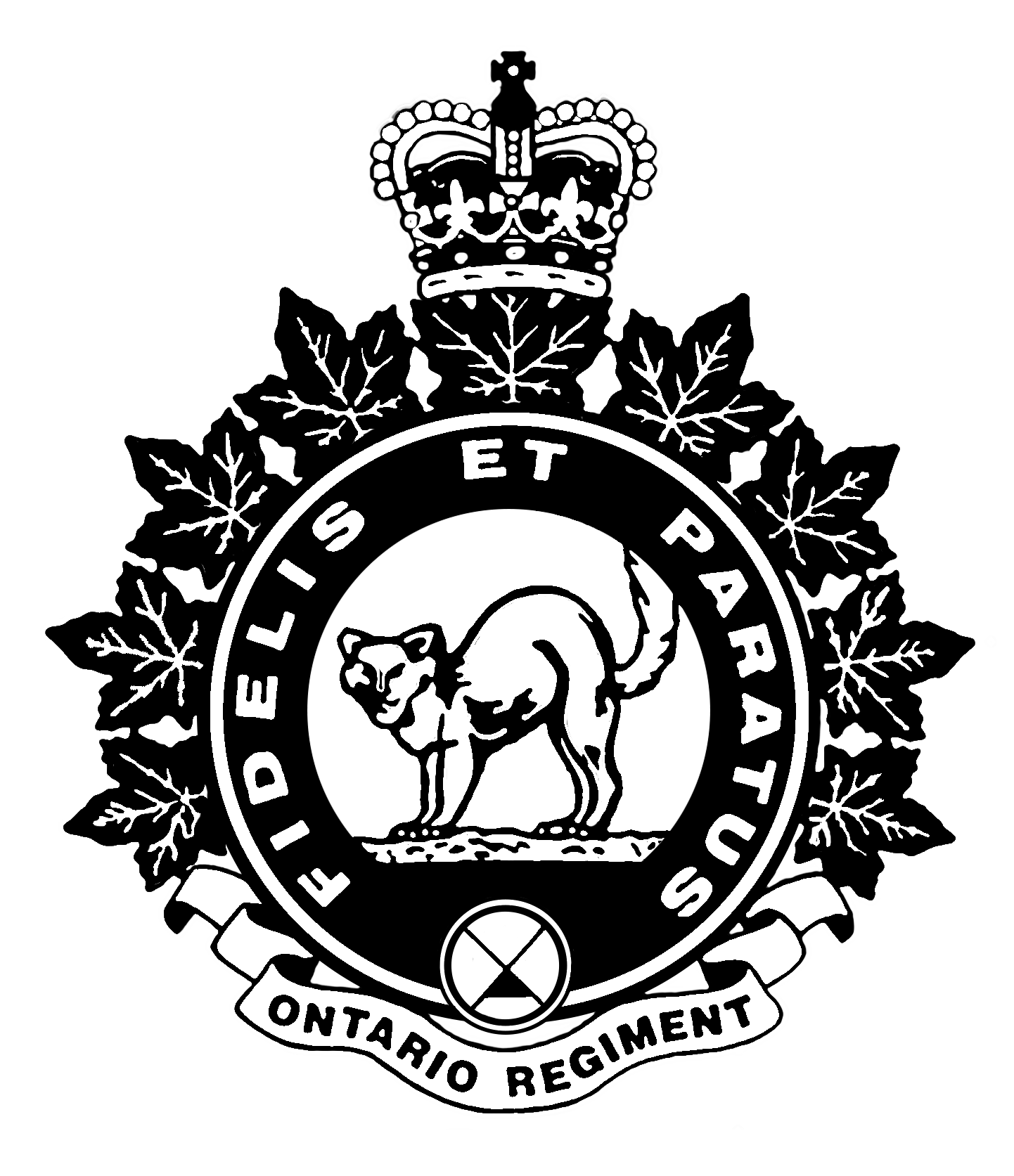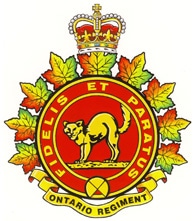The Oshawa Armoury (now the Colonel R.S. McLaughlin Armoury) was less than three months old at the outbreak of the First World War on 4 August 1914. It opened with great ceremony on 25 May and the Regiment moved in, and continued with planning for the impending summer training camp in June.
Once war was declared, the Armoury quickly became the centre of military activity in Ontario County. It was used as a recruiting centre, training location and as winter quarters. A twenty-four hour guard was placed at the Armoury within a few days of the declaration of war.
Immediately, the Armoury became the recruiting centre for Oshawa. Two hundred men descended upon the Armoury with the news that Canada was at war. At the time, it was not clear what Canada’s role would take. This was clarified on 8 August when the federal government announced that Canada would initially provide an infantry division to the British war effort. The 34 th Ontario Regiment was given a quota of 125 men. Other recruiting centres were set up around Ontario County and the quota was quickly achieved. The volunteers from around the County gathered at the Oshawa Armoury on 14 August.
The facilities at the newly-opened armoury were still basic and the men were required to sleep on the bare wooden floor of the parade square. Upon hearing this, Robert McLaughlin (Senior) recruited Lieutenant Frank Chappell and the two of them visited Oshawa’s largest department store and purchased all of the blankets and down-filled quilts in stock. When that wasn’t enough for each soldier, McLaughlin and son R.S. (later the Honourary Colonel) went to their friends’ homes and requested that they donate their winter blankets to the cause.
The volunteers of the First Contingent marched out of the Armoury on 20 August to the Oshawa train station, bound for the new training camp at Valcartier, Quebec. Canada offered Britain the Second Contingent in mid-October 1914 and this time the 34th Ontario Regiment’s quota was three officers and 100 men. Again, more men offered their services than were
required and the best were selected for the new company. This group marched out of Oshawa on 7 November, 1914 under the command of Captain Harold S. Cameron (later commanding officer of the Ontario Regiment from 1921-25) where they joined the 20th Battalion. The newspapers don’t provide any detail but it is likely that the men from out of town would have stayed at the Armoury during this brief time. The Oshawa Armoury was the site of a reception for the men on the evening prior to their departure.
The Third Contingent began recruiting in early 1915. Lieutenant Colonel C.F. Bick, Commanding Officer of the 34th Ontario Regiment, was named to command the 37th Battalion, Canadian Expeditionary Force.
The 37th recruited from a wide area of the Province of Ontario, with 100 men coming from Ontario County, as per the quota. Bick’s battalion was spread over several communities throughout the province, each company training locally in the initial months. The Oshawa Armoury was the site of training for “D” company, the Ontario County company, of the battalion. It is not clear from the newspapers whether the Armoury was used as a barracks as well or if the men were billeted in homes. The 37th Battalion’s distributed companies were brought together at Camp Niagara in late May 1915.
“A” and “B” companies of the 84th Battalion arrived in Oshawa in November 1915 to take up winter quarters. The battalion’s “C” and “D” companies were billeted in Brantford, the site of Battalion Headquarters. The battalion was split up due to a lack of accommodation in Brantford. On 10 May, 1916 the 84th Battalion left Oshawa and arrived at the Exhibition grounds in Toronto where they were reunited with the Brantford companies.
Interestingly, the 116th Battalion, which was raised in Ontario County, never spent the winter or did any substantial training at the Oshawa Armoury. At the time the 116th was conducting initial recruiting, the 84th Battalion had already taken up residence. The soldiers of the 116 th were billeted at homes around the County during the winter. The 116th Battalion conducted a 75-mile march through Ontario County that began on 15 May in Beaverton and concluded on 27 May in Oshawa. “A” Company was billeted at the Armoury until the Battalion left for Camp Niagara on 30 May.
The only period that Ontario County’s second battalion, the 182nd Battalion, made any substantial use of the Armoury was during the winter of 1916-17. Recruiting for the Battalion began in March 1916 with the soldiers being billeted in private homes. They spent the summer at a camp at Heydenshore Park in Whitby and then went directly to Camp Niagara in early September. They arrived back in Oshawa to take up winter quarters at the Armoury in late October 1916. They left again in April 1917, bound for Halifax and then on to England. Battalion Headquarters for the 182nd was located in Whitby. The 182nd held boxing matches and dances in the Armoury. Christmas dinner for the Battalion was also served there.
The two photographs of the Armoury interior are quite unique. They show the winter quarters configuration, but the year is unknown. The photographer was standing on the Officers’ Mess balcony, looking east, across the parade square. The Sergeant’s Mess can been seen on the second floor, at the left. The parade square has been turned into barracks. There are rows of dining tables and benches in the foreground. A wooden wall separates the messing area from the sleeping area, which consists of bunks.



It is not clear if the Armoury was used again for winter quarters in 1917-18. The Oshawa and Whitby newspapers for 1918 have not survived so there is no local record of what was happening at the Armoury that year. An element of the 2nd Depot Battalion, 2nd Central Ontario Regiment was located in Oshawa during early 1918, so it’s likely that the men were quartered at the Armoury. Don’t let the name confuse you – this unit was not related to the 34th Ontario Regiment. Depot battalions were set up across the country to manage the intake of new recruits. The battalions were organized into regiments, based on the province. The men of the 2nd Depot Battalion left Oshawa in late May 1918 for Camp Niagara.
There is no detailed record of how the Armoury was used between these periods of serving as winter quarters. Prime Minister Borden made a speech at the Armoury on 29 November 1917. It was the site of recruiting meetings and for National Patriotic Fund meetings. It continued to the primary recruiting centre for Ontario County.
Just as the Armoury was the beginning of the journey for Ontario County’s soldiers, it was also the ending. On 29 March 1919, the 116th Battalion returned home to Oshawa after official demobilization in Toronto the previous day. About 80 members who lived in the County arrived at the train station, marched up Simcoe Street behind several bands and arrived at the Oshawa Armoury. A large crowd was packed into the Armoury to greet them. Lieutenant Colonel Pearkes and various local dignitaries made speeches. The 116th Battalion’s Colours were turned over to Lieutenant Colonel Bick, commanding officer of the 34th Ontario Regiment, for safekeeping. With that, the Armoury was back to a peacetime mode.


